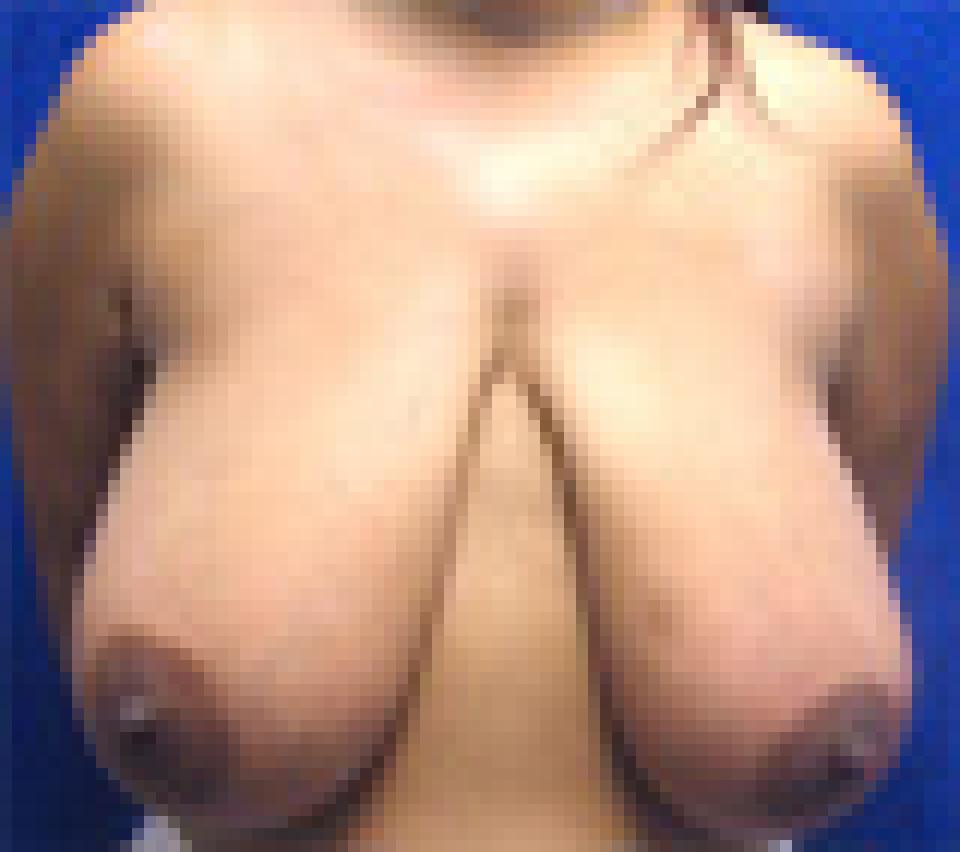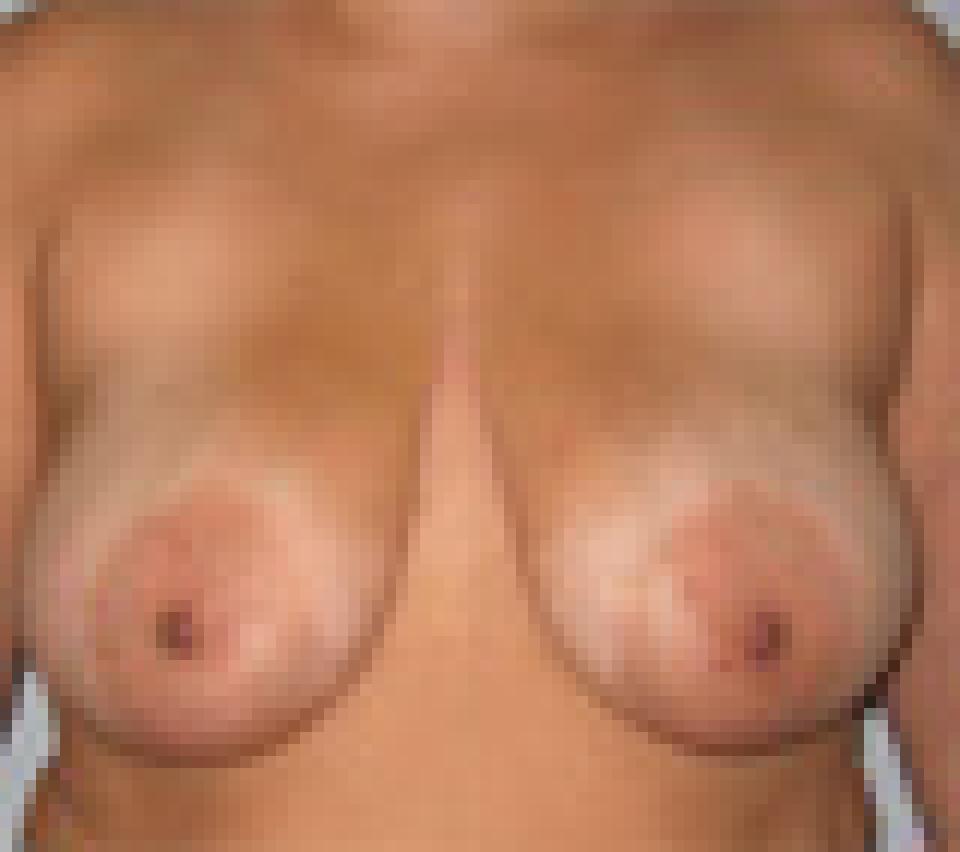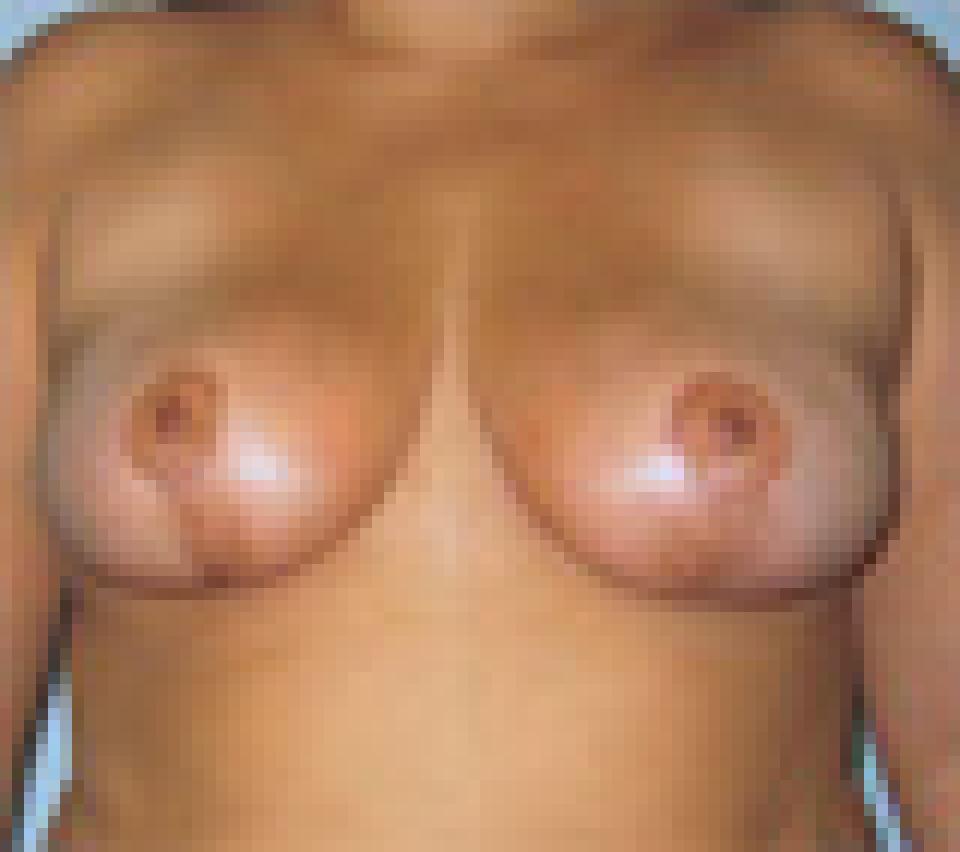Many people don’t realize that large breasts can be painful. Imagine donning a necklace that weighs several pounds and wearing it day and night. Now, imagine supporting the weight of that necklace on two relatively slender straps the dig into your shoulders all day long. The pressure can be significant enough to cause numbness and tingling in the hands. This is what women with large breasts contend with every day of their lives. Even more people don’t realize that the pain from large breasts can be emotional, as they often attract unwanted attention. Setting the issue of pain aside for a moment, large breasts can also be very limiting to a woman’s fashion choices, as they can result in body proportions that are not represented in typical ready to wear sizes. Often, women with large breasts feel that they look “fat” when compared to women with smaller breasts who have otherwise similar measurements.
Many women with large breasts also have difficulties engaging in physical activities that they once loved or would love to try. Breast reduction is a surgical procedure that can allow these women to enjoy a more full and pain free life. For that reason, it is one of my favorite procedures to perform. Patients are truly happy to literally have a great weight lifted off of their shoulders.
Breast reduction removes excess breast tissue, fat and skin- since they are all mixed together. The scars that result from this procedure ultimately look either like a “lollipop” or an “anchor.” The “lollipop” method is also termed a “short scar” or “minimal incision” method, because the resultant scars are significantly shorter than those that result from that “anchor” or traditional method. In my practice, I almost exclusively utilize the “lollipop” or “short scar” method and most patients in my practice come in asking for this method.
Once I have removed enough tissue to achieve an appropriate breast size, the nipple and areola are repositioned, which means that the new, smaller breast also has a “lifted” appearance. While this is not the primary goal of this procedure, it is a fantastic secondary benefit of it. I strive to achieve the same aesthetic standards when I perform medically necessary breast reduction as I do for cosmetic breast lift or mastopexy. Since stretching of the areola is a common problem in patients with very large breasts, I typically reduce the size of the areola during breast reduction.
I know that nipple sensation and the ability to breast feed are both important and so I take great care to maintain the connections between the nipple and underlying tissues so that neither will not be affected significantly by the surgery, however the extent to which this is possible will depend on the initial size of your breasts and the kind of operation performed. Both are, however, possible risks of this procedure and you must be prepared for the possibility of one or both prior to having the surgery, although both are exceeding rare.
A “free nipple graft” technique is occasionally necessary to significantly reduce breasts that are extremely large. This technique necessarily results in complete loss of nipple sensation and complete loss of the ability to breast feed. I use it only as a last resort in patients who have extremely large breasts. Most of these patients have little to no nipple sensation prior to surgery and are essentially unable to breast feed due to the extremely large size of their breasts.



